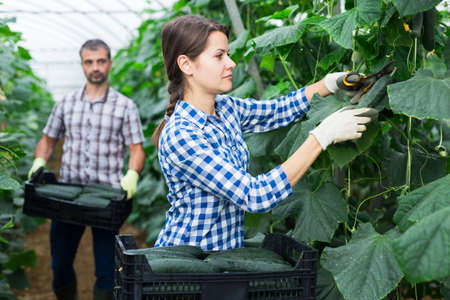Origins of Allotments in Britain
When we take a walk through the patchwork quilt of allotments found across towns and villages in Britain today, its easy to overlook the rich history that shaped these humble plots. Allotments have their roots in a time when land ownership was tightly controlled and ordinary folk had precious little access to the earth beneath their feet. Their story begins in earnest during the era of land enclosures, stretching from the 17th to the 19th century, when vast areas of common land—once used collectively by local communities for grazing and growing—were fenced off and claimed by wealthy landowners. This left working families, especially those in rural areas, struggling to grow food or keep livestock to support themselves. Out of this hardship grew a pressing social need: small plots were set aside as a lifeline for the poor, providing space to cultivate vegetables and supplement meagre wages. Over time, these plots became known as allotments—a term still cherished today. In many ways, allotments stand as living reminders of both struggle and resilience, reflecting a long-standing British tradition of community spirit, self-reliance, and the enduring value of having one’s own patch of earth.
2. Allotments Through the Wars
When we talk about allotments in Britain, it’s impossible to ignore their pivotal role during the two World Wars. In times of rationing and scarcity, these humble plots became lifelines for many families. The outbreak of the First World War saw a surge in demand for local food production as imports dwindled. Allotments were allocated not just in back gardens and fields, but even on urban wastelands and railway embankments. Local councils and community groups rallied together, recognising the importance of home-grown produce in supplementing the nation’s diet.
However, it was during the Second World War that allotment culture truly flourished and found its place in the British consciousness. The famous “Dig for Victory” campaign, launched by the Ministry of Agriculture in 1940, urged everyone to transform available land into productive vegetable patches. Parks, playgrounds, and even palace grounds were converted into growing spaces. This wasn’t just about food; it was a morale boost, giving people a sense of purpose and unity during tough times.
The impact of this movement is best illustrated by looking at how allotment numbers changed during these periods:
| Year | Approximate Number of Allotments |
|---|---|
| 1914 (Pre-WWI) | 450,000 |
| 1918 (End of WWI) | 1,500,000 |
| 1939 (Start of WWII) | 819,000 |
| 1943 (Height of Dig for Victory) | 1,400,000 |
The legacy of these efforts can still be seen today. For many older generations, allotments evoke memories of family gatherings spent tending to beans and potatoes side by side. Beyond nourishment, they provided a space for camaraderie and resilience. This wartime spirit cemented allotments as a cornerstone of British life, blending practicality with a communal sense of belonging that continues to shape our attitudes towards organic growing and local food production.
![]()
3. The Rise of Organic Growing
Organic growing in Britain has its roots deeply embedded in a response to industrialisation and the increasing use of chemicals in agriculture during the twentieth century. As many long-time allotment holders will recall, the early days of allotment gardening were marked by a pragmatic attitude—grow what you could, how you could. However, as synthetic fertilisers and pesticides became commonplace after the Second World War, concern began to stir among both growers and consumers about the long-term effects on health and the environment.
This shift towards organic methods was not sudden; rather, it grew out of the efforts of a handful of passionate British pioneers who questioned the wisdom of chemical dependency in cultivation. Figures such as Lady Eve Balfour, who founded the Soil Association in 1946, played a pivotal role in promoting organic principles. The Soil Association, along with other advocacy groups like Garden Organic (formerly HDRA), provided practical guidance and research to support a return to more natural methods. They championed composting, crop rotation, and biodiversity—techniques that many older gardeners still swear by today.
As awareness grew about soil health, wildlife preservation, and food safety, organic growing began to be seen not just as a nostalgic practice but as an essential part of sustainable living. Allotmenteers up and down the country found themselves at the forefront of this movement, often sharing seeds and tips for chemical-free cultivation across plot boundaries. The British approach to organic gardening is grounded in community spirit and respect for nature’s rhythms—a tradition that continues to thrive on allotments from Cornwall to Cumbria.
4. Allotments as Community Hubs
Allotments in Britain have long been much more than simple patches of cultivated earth; they are vibrant community hubs where neighbours meet, friendships flourish, and generations come together. In a world where people often feel isolated despite living close by, the allotment offers a unique antidote to modern urban life. Here, plot holders swap stories over cups of tea, lend tools, and share surplus harvests—a culture of generosity that harks back to the values of older times.
One of the most remarkable aspects of allotment culture is the way it encourages intergenerational learning. Grandparents pass down their tried-and-tested growing techniques to eager grandchildren, while newer arrivals might introduce novel crops or sustainable methods learned elsewhere. This constant exchange ensures that knowledge is preserved, adapted, and enriched with each passing season. Conversations about weather patterns or composting tips can become lessons in resilience and resourcefulness, connecting people not only with the soil but with each other.
The diversity found within British allotments is another testament to their role as centres of cultural exchange. Particularly in cities, plots are tended by people from all walks of life and many corners of the globe. Each gardener brings their own traditions—be it cultivating runner beans in the time-honoured English style or introducing chilli peppers and okra from warmer climes. The result is a patchwork of produce and practices, fostering understanding and respect among neighbours.
Social Functions of Allotments |
Examples from British Allotments |
|---|---|
| Social Connection | Community barbecues, shared work days, informal gatherings at shed doors |
| Intergenerational Learning | Younger gardeners learning planting schedules from elders; children involved in seed sowing and harvesting |
| Cultural Exchange | Sharing recipes for unfamiliar vegetables; swapping seeds native to different countries; storytelling sessions about gardening traditions |
| Mutual Support | Lending tools or helping water plots during holidays; collective responses to challenges like pests or droughts |
This spirit of cooperation and shared purpose underpins why allotments remain so cherished across Britain. Whether you’re a seasoned grower recalling “the old days” or a newcomer seeking connection in a bustling city, the allotment offers a warm welcome—and often a handful of freshly picked beans for your trouble.
5. Sustainability and Health Benefits
In recent years, the value of allotments and organic growing in Britain has been freshly appreciated through the lens of sustainability and health. As our society becomes more conscious of environmental impact, many Britons have returned to the humble allotment not only as a nod to tradition but as a practical response to global challenges. Growing one’s own vegetables organically—without artificial chemicals—supports local biodiversity, reduces food miles, and helps cut down on unnecessary packaging waste. For many, this is more than just gardening; it is a commitment to living lightly on the land, echoing time-honoured wisdom passed down from previous generations.
The benefits are not solely environmental. There is a strong emphasis today on the physical and mental well-being gained from tending an allotment. Working outdoors, connecting with nature, and nurturing plants from seed to harvest offer profound satisfaction and a sense of achievement. The gentle exercise involved in digging, planting, and weeding keeps bodies active in a way that feels purposeful rather than routine. Moreover, these green spaces provide a sanctuary for mental health—a quiet escape from the hustle and bustle of modern life where worries can be set aside for an hour or two.
Sharing surplus crops with neighbours or at community produce swaps also strengthens social bonds, fostering a spirit of cooperation reminiscent of wartime ‘Dig for Victory’ efforts. Allotment holders often swap advice as freely as they swap runner beans or courgettes, creating a sense of belonging that is increasingly rare elsewhere. In essence, Britain’s passion for allotments and organic growing continues to nourish both people and planet—just as it has done for generations.
6. Contemporary Allotment Challenges and Movements
Allotments, with their deep roots in British history and culture, now face a range of modern challenges that reflect the changing landscape of urban life. One of the most pressing issues is the ever-growing waiting lists for allotment plots across the country. In many cities, demand far outstrips supply, with prospective gardeners sometimes waiting years for a small piece of land to call their own. This scarcity is exacerbated by increasing pressures on urban land—rising property values, new housing developments, and infrastructure projects often threaten existing allotment sites, making it a constant struggle to preserve these green havens.
At the same time, a heartening resurgence of interest among younger generations is breathing new life into the allotment movement. Many young people, inspired by concerns about sustainability, food miles, and climate change, are turning to organic growing as a way to reconnect with nature and take control over what ends up on their plates. Social media has played its part too, helping to share knowledge and foster communities among new growers who might once have felt isolated.
Organisations such as The National Allotment Society continue to campaign tirelessly for protection and expansion of allotment spaces. Community-led movements are also gathering pace, with local groups banding together to save threatened plots or create new growing spaces from derelict land. These efforts reflect not only a desire for fresh, home-grown produce but also an appreciation for the social and mental health benefits that come with working on an allotment alongside neighbours from all walks of life.
Despite the challenges, the enduring spirit of Britain’s allotment holders—old hands and newcomers alike—remains strong. Their determination to adapt, innovate, and protect these cherished spaces ensures that allotments will continue to play a vital role in our cultural landscape for generations to come.


